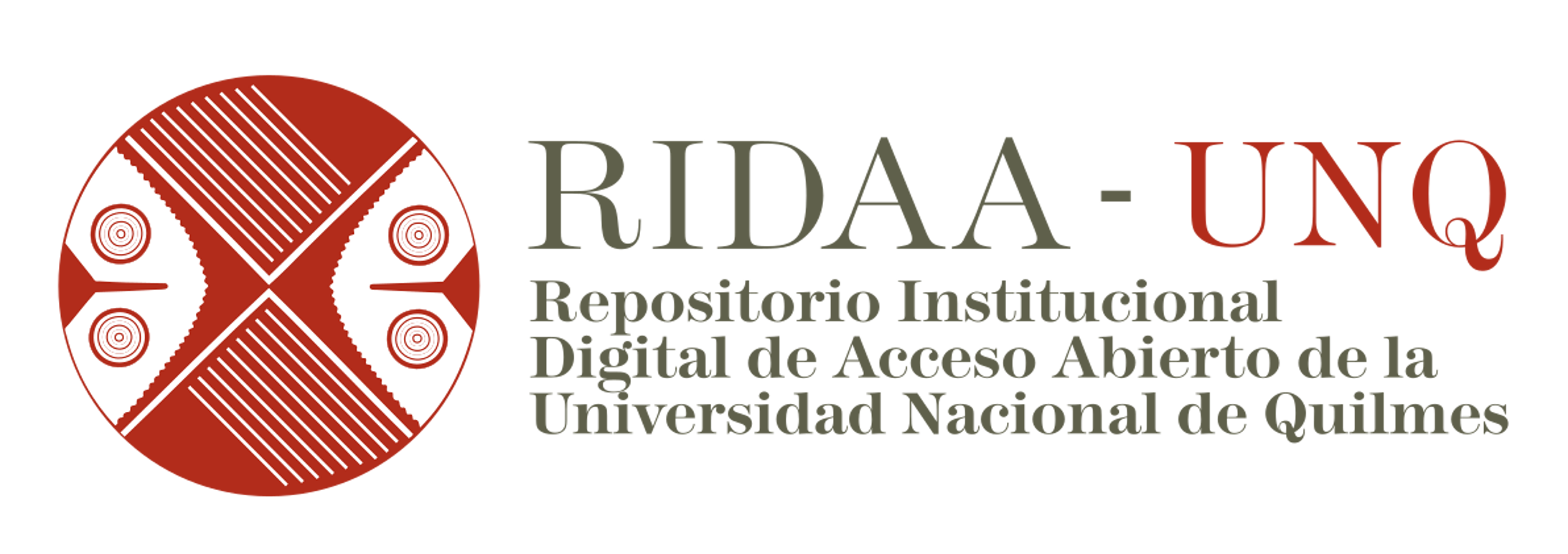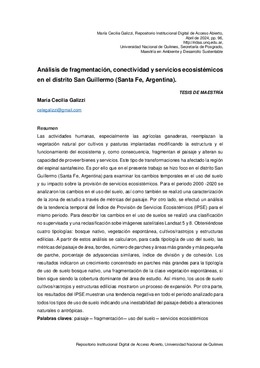Análisis de fragmentación, conectividad y servicios ecosistémicos en el distrito San Guillermo (Santa Fe, Argentina).
Resumo
Las actividades humanas, especialmente las agrícolas ganaderas, reemplazan la vegetación natural por cultivos y pasturas implantadas modificando la estructura y el funcionamiento del ecosistema y, como consecuencia, fragmentan el paisaje y alteran su capacidad de proveer bienes y servicios. Este tipo de transformaciones ha afectado la región del espinal santafesino. Es por ello que en el presente trabajo se hizo foco en el distrito San Guillermo (Santa Fe, Argentina) para examinar los cambios temporales en el uso del suelo y su impacto sobre la provisión de servicios ecosistémicos. Para el periodo 2000 -2020 se analizaron los cambios en el uso del suelo, así como también se realizó una caracterización de la zona de estudio a través de métricas del paisaje. Por otro lado, se efectuó un análisis de la tendencia temporal del Índice de Provisión de Servicios Ecosistémicos (IPSE) para el mismo periodo. Para describir los cambios en el uso de suelos se realizó una clasificación no supervisada y una reclasificación sobe imágenes satelitales Landsat 5 y 8. Obteniéndose cuatro tipologías: bosque nativo, vegetación espontánea, cultivos/rastrojos y estructuras edilicias. A partir de estos análisis se calcularon, para cada tipología de uso del suelo, las métricas del paisaje de área, bordes, número de parches y áreas más grande y más pequeña de parche, porcentaje de adyacencias similares, índice de división y de cohesión. Los resultados indicaron un crecimiento concentrado en parches más grandes para la tipología de uso de suelo bosque nativo, una fragmentación de la clase vegetación espontáneas, si bien sigue siendo la cobertura dominante del área de estudio. Así mismo, los usos de suelo cultivos/rastrojos y estructuras edilicias mostraron un proceso de expansión. Por otra parte, los resultados del IPSE muestran una tendencia negativa en todo el periodo analizado para todos los tipos de uso de suelo indicando una inestabilidad del paisaje debido a alteraciones naturales o antrópicas. Human activities, especially livestock farming, replace natural vegetation with crops and implanted pastures modifying the structure and functioning of the ecosystem and, as consequence, fragment the landscape and alter its capacity to provide goods and services. This type of transformation has affected the Spinal region of Santa Fe. That is why in this paper the focus was placed on the San Guillermo district (Santa Fe, Argentina) to examine temporary changes in land use and their impact on the provision of ecosystem services. For the period 2000-2020, changes in land use were analyzed, as well a characterization of the study area through landscape metric. On the other hand, an analysis of temporal trend of de Index of Provision of Ecosystem Services (IPSE) for the same period. To describe the changes in land use, an unsupervised classification and a reclassification on satellite images Landsat 5 and 8 were carried out. Obtaining five types: native forest, spontaneous vegetation, crops, bare soil/stubble, and building structures. Based on these analyses, for each types of land use, the landscape metric of area, borders, number of patches, and larger and smaller patches, and larger and smaller patch areas were calculated, percentage of similar adjacencies, index of division and cohesion. The results indicated a concentrated growth in larger patches for the native forest land use typology, a fragmentation of the spontaneous vegetation class, although it remains the dominant coverage of the study area. Likewise, land uses crops/stubble and building structures showed an expansion process. On the other hand, the results of the IPSE show a negative trend throughout the period analyzed for all types of land use, indicating an instability of the landscape to natural or anthropogenic alterations.

